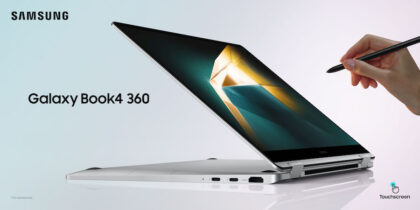Cloud-based applications offer businesses the opportunity to increase workplace productivity and boost employee collaboration, and they come with an adoption curve that enterprises can ride all the way to the cloud via the Chrome platform on the new Chromebooks for business, a fully cloud-based approach to computing.
Starting on the curve can begin via a corporate- or department-wide strategy, or even through organic growth; for example, when Android power users introduce their devices into pre-existing business processes, their co-workers follow suit, and the project team subsequently reaches further into the cloud for all their productivity solutions.
Starting With Android
Android is a popular on-ramp to the cloud application adoption curve. The first phase of the curve can be reached through “bring your own device” (BYOD) users wanting to access corporate email from their personal Android devices, enterprises mobilizing their first legacy app, or businesses developing a mobile-first initiative where they equip an entire department, such as their sales or executive team, with mobile devices.
Many enterprises are pushed toward cloud adoption through “Shadow IT,” where employees take it upon themselves to use their own mobile devices, and even cloud applications, to perform their jobs. For example, an employee could take their own initiative to download a group chat or email app and set up their mobile device with their corporate email account. These actions by employees could lead to businesses offering workers the opportunity to download corporate-authorized mobile apps, such as for their learning management system (LMS) or time tracking system. As this crucial phase progresses, smartphones, tablets and Android apps become core on-the-go productivity tools for you and your employees.
Migrating to Cloud-based Productivity Apps
According to a recent Spiceworks survey of 257 IT decision-makers, enterprise use of cloud productivity apps is expected to increase, with 70 percent of organizations at least beginning to use cloud-based apps such as Office 365 or G-Suite from Google Cloud over the next 24 months. Migrating your employees to cloud-based apps allows users to collaborate and communicate across their devices, including smartphones, tablets and PCs. G Suite includes the necessary productivity applications and even lightweight mobile device management (MDM) platforms, enabling you to add another security layer to the mobile devices accessing your corporate apps and data. G Suite can also serve as single sign-on (SSO) security for some non-Google cloud applications.
Once your business is live on G Suite, you can access the G Suite Marketplace (formerly called the Google Apps Marketplace), which showcases enterprise cloud applications you can integrate directly with G Suite.
Explore the business potential of Chrome.
Download this free guide to streamlining business operations with Chromebooks. Download Now
Going All in With Chrome
If your business is regularly using cloud-based apps, you’re already well on your way to advancing in the adoption curve. According to data from the Spiceworks survey, the next step for cloud-based productivity for business may be cloud-centric devices such as Chromebooks. Approximately half of the organizations surveyed reported that they could use a hydrid device that supports Android apps on Chrome for at least some of their end-users. If your core applications, including productivity, project management, collaboration and even some or all your financial systems, are in the cloud, Android and Chrome can provide all the tools necessary for you to gain access to your applications.
In this stage of the adoption curve, users move beyond productivity apps and find customer relationship management (CRM), enterprise resource planning and other cloud-based applications that integrate with G Suite seamlessly. The Google Play Store includes client apps for many popular enterprise cloud applications. Google makes it easy to populate an enterprise app store with these essential apps as well. For productivity and enterprise applications that haven’t made it into the G Suite Marketplace, the Chrome Web Store includes free Chrome extensions for a range of business and productivity applications.
Entering the final phase of the cloud-based adoption curve means that you can now issue Chromebooks to your employees. The new Samsung Chromebook Plus and Chromebook Pro are ideal, as they’re optimized for Android apps, including some productivity apps your employees are probably already using. More interestingly, the devices are 3-in-1 with a 360-degree hinge that lets you go from tablet to laptop, and also possess a built-in pen stylus. Security features include:
- Hardware-based verified access to the device
- Data encryption for securing your corporate information
- Automatic updates for the OS, browser and apps
Following the cloud-based application adoption curve sets your team up for success by helping you create a flexible working environment that provides your employees with access to cloud-based applications any time, any place — and all on the device of their choosing.
More businesses are turning to Chromebooks to stay ahead of the trends and increase productivity.






